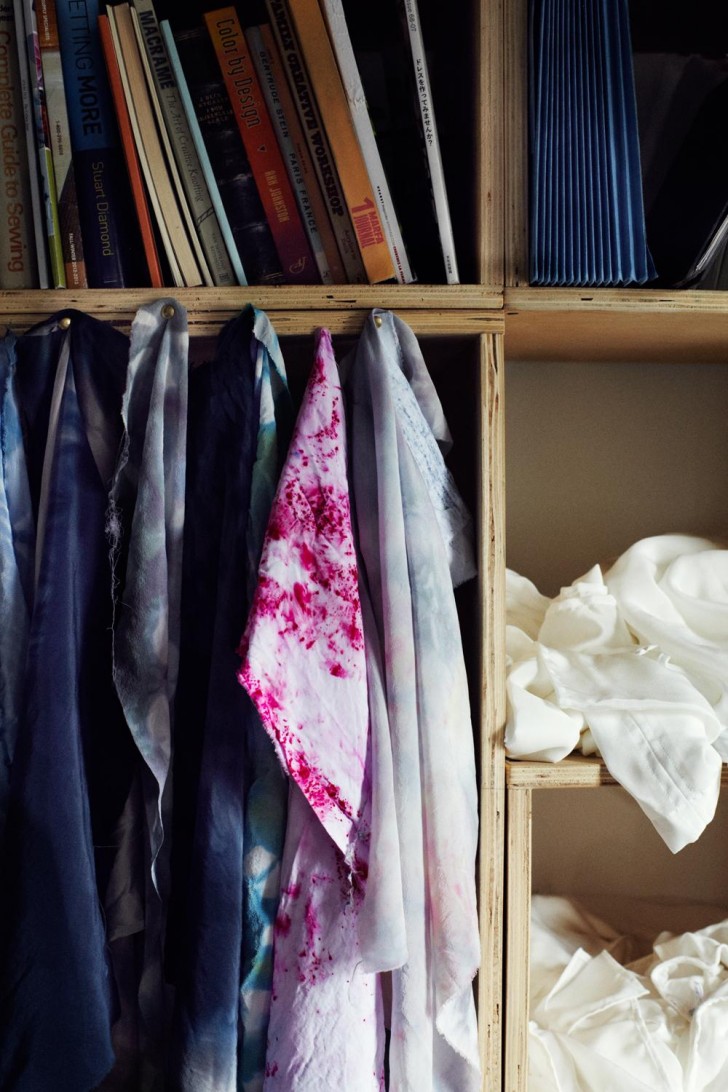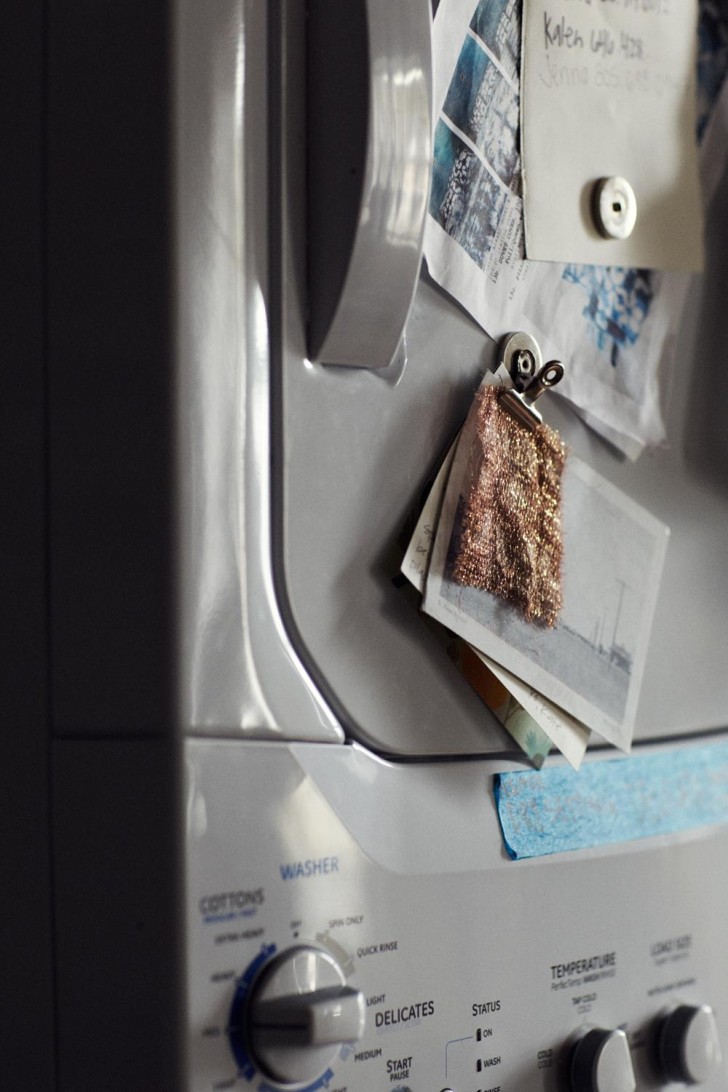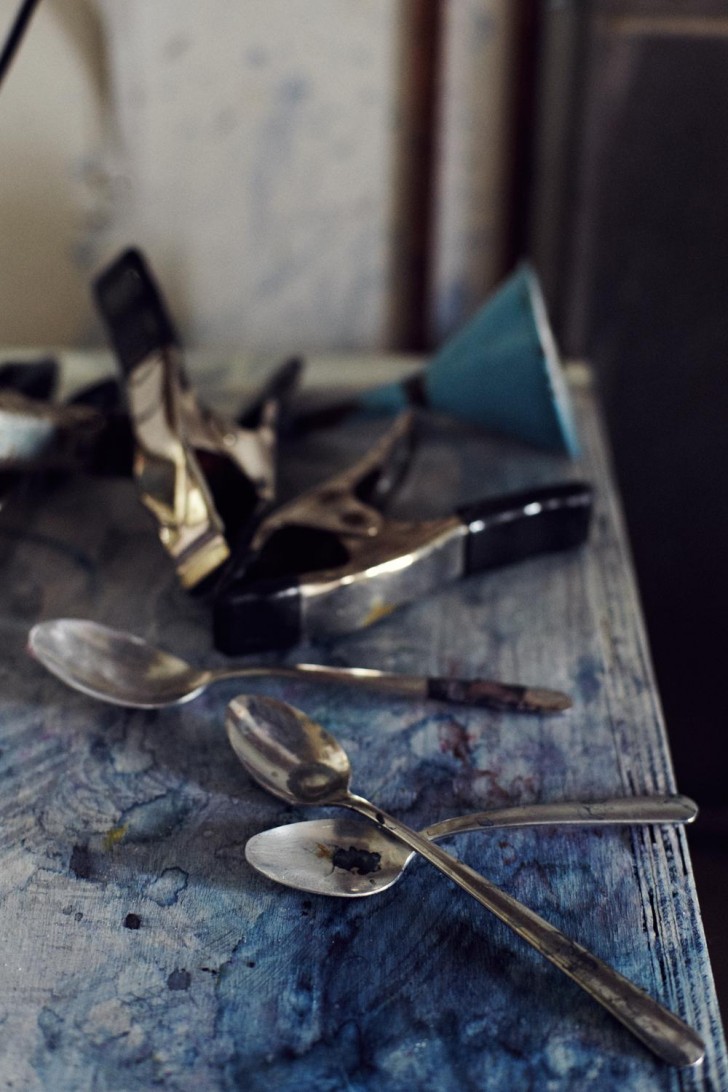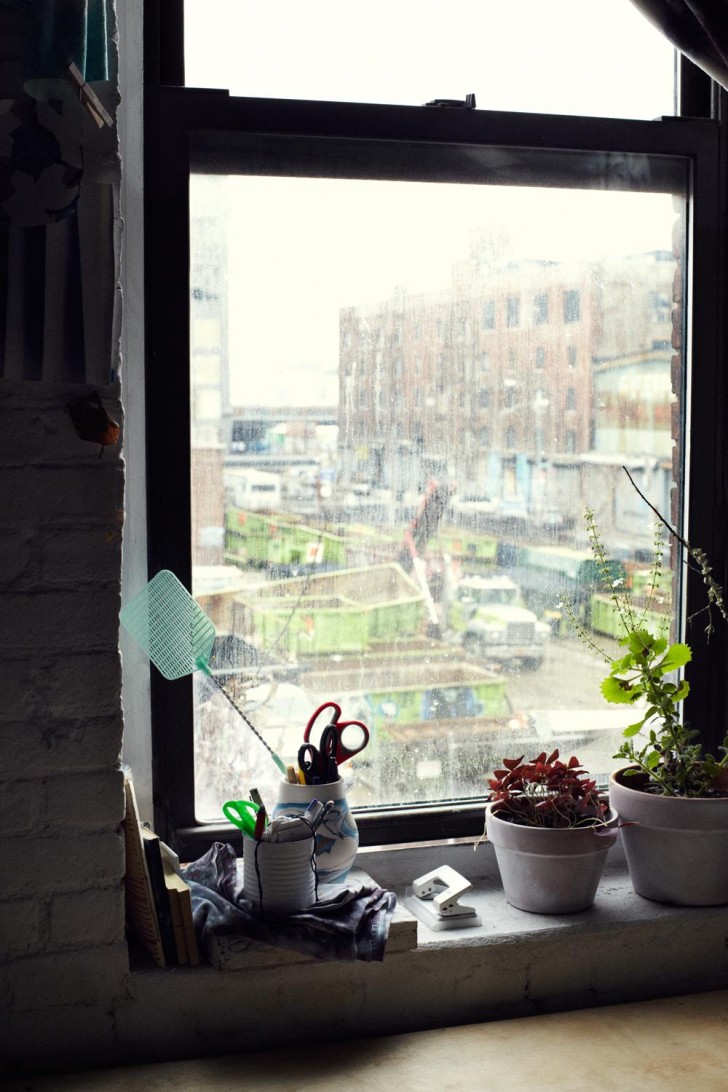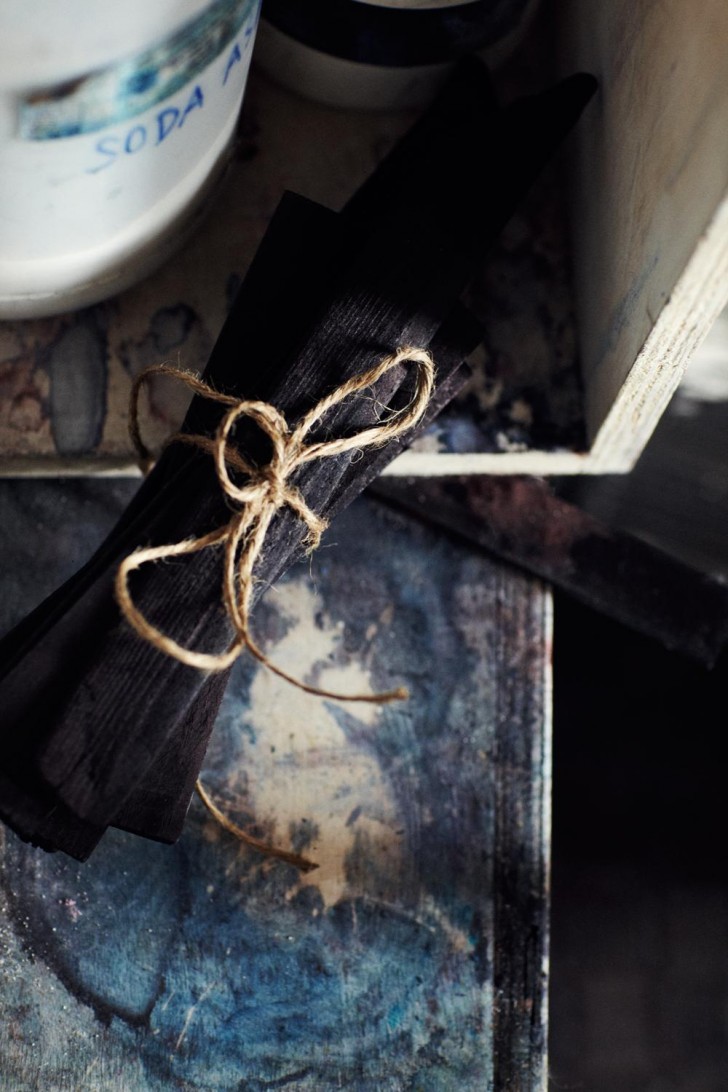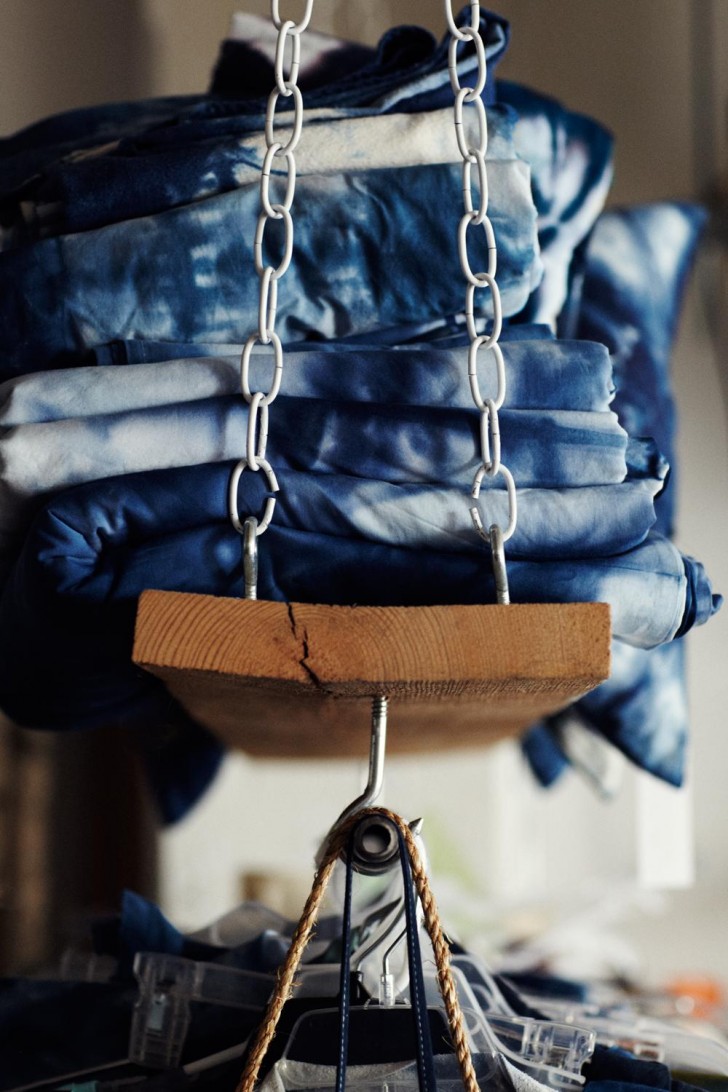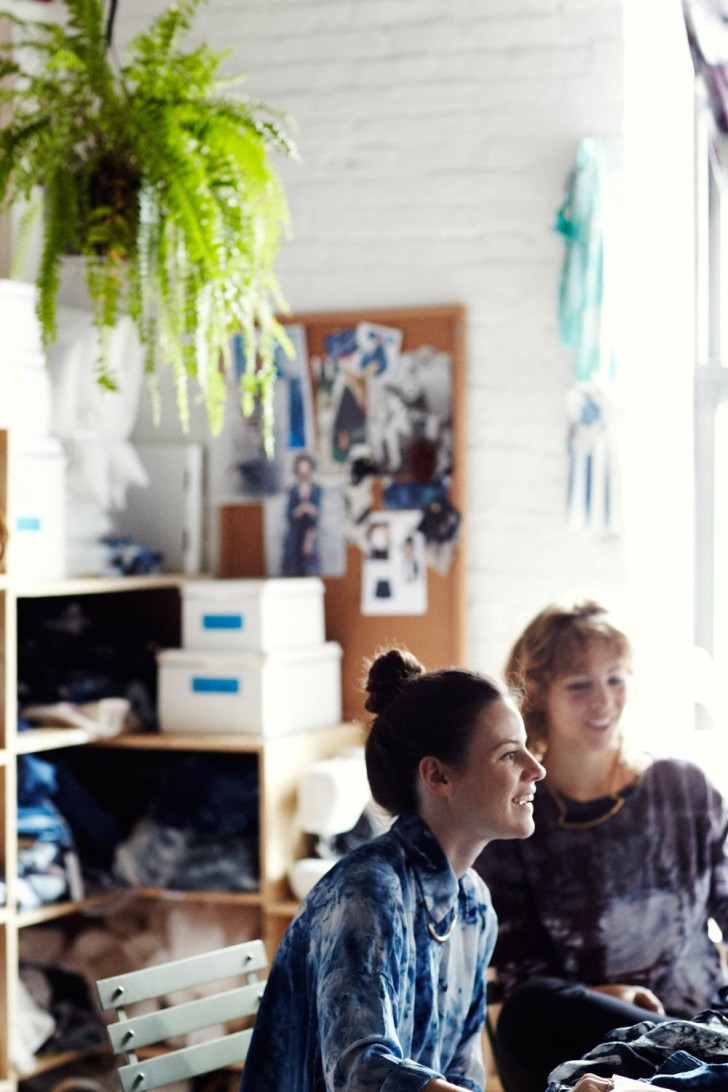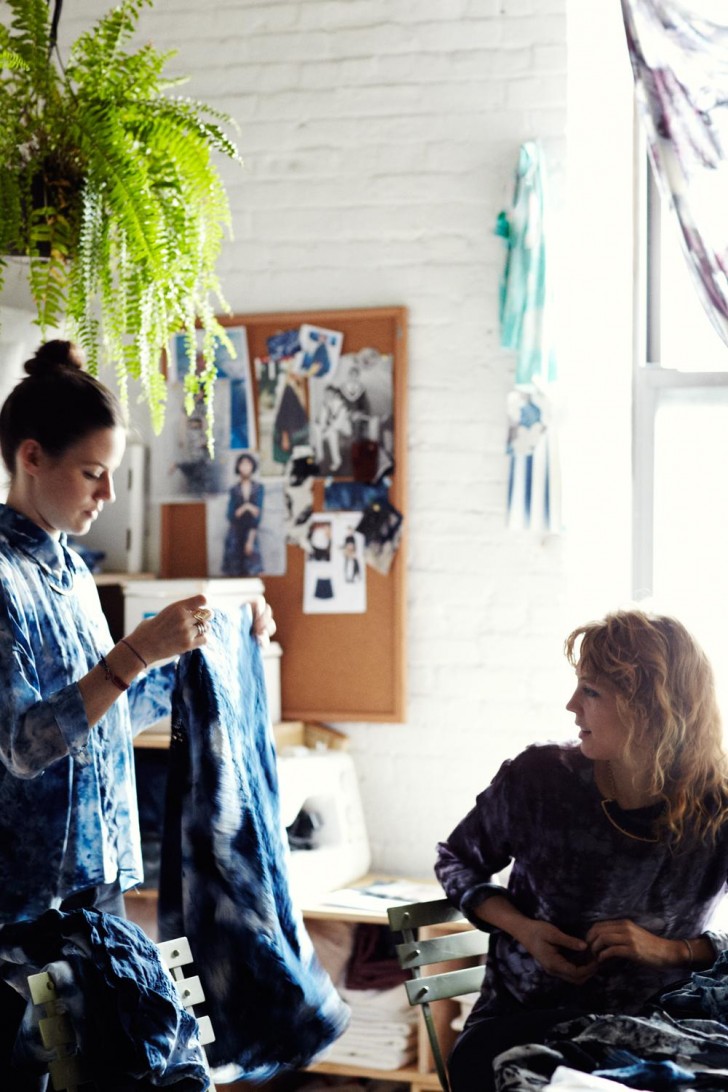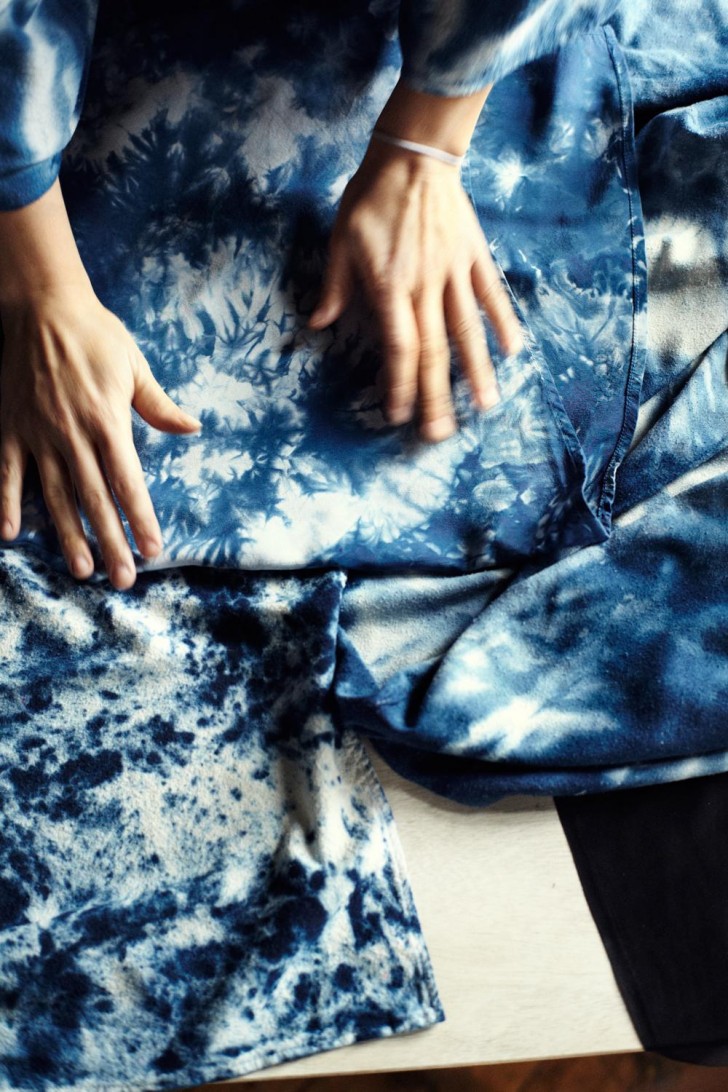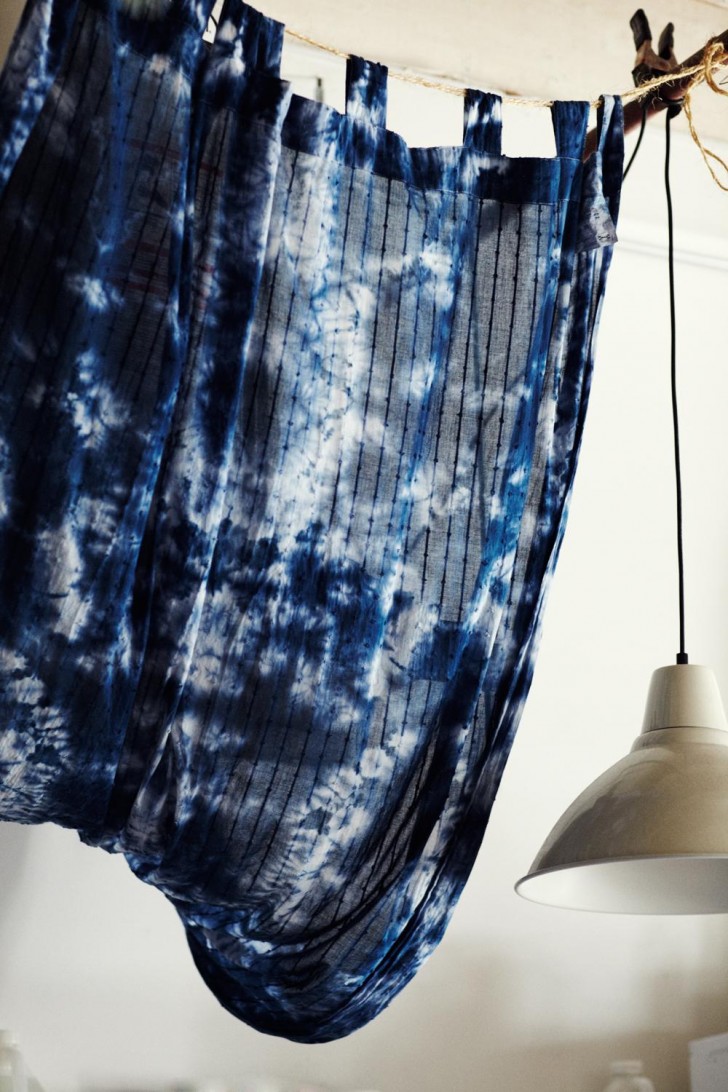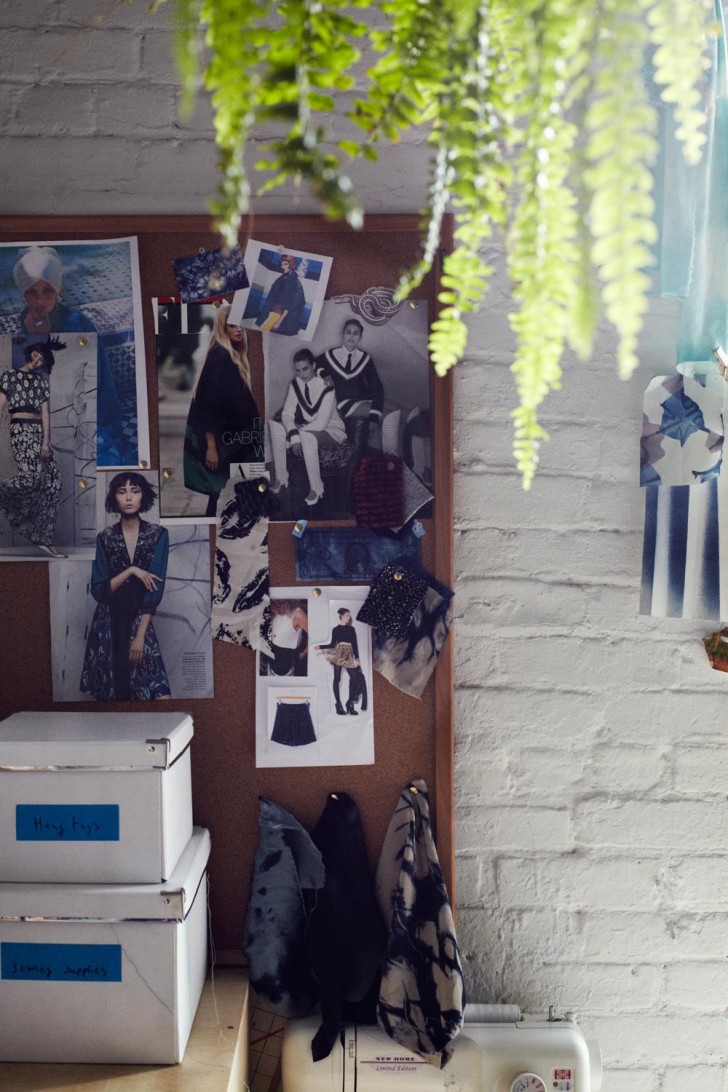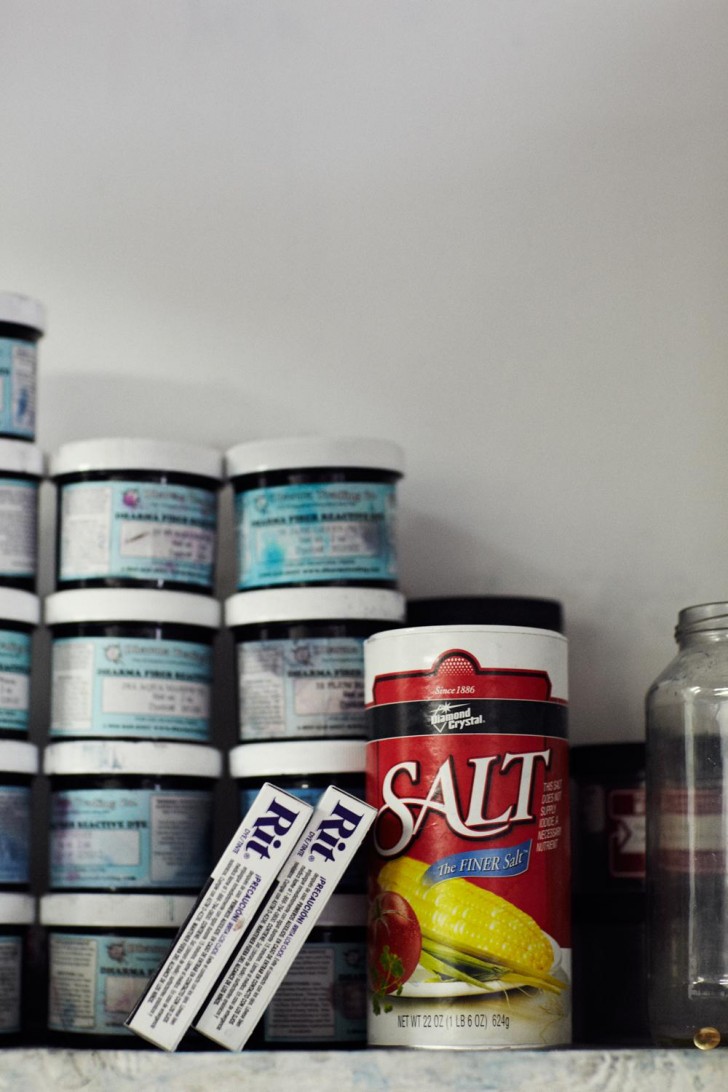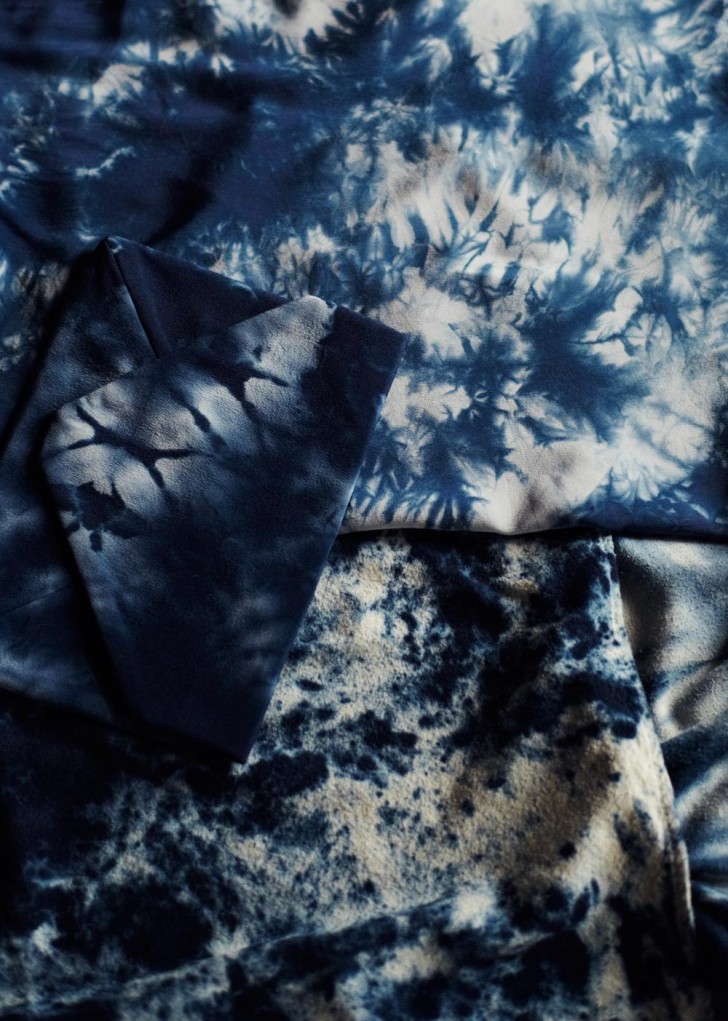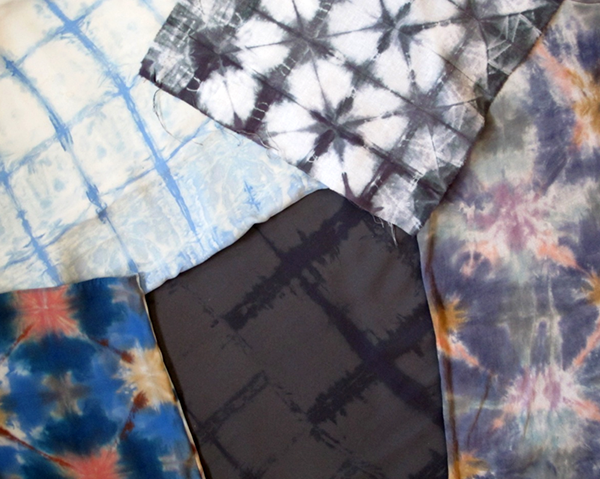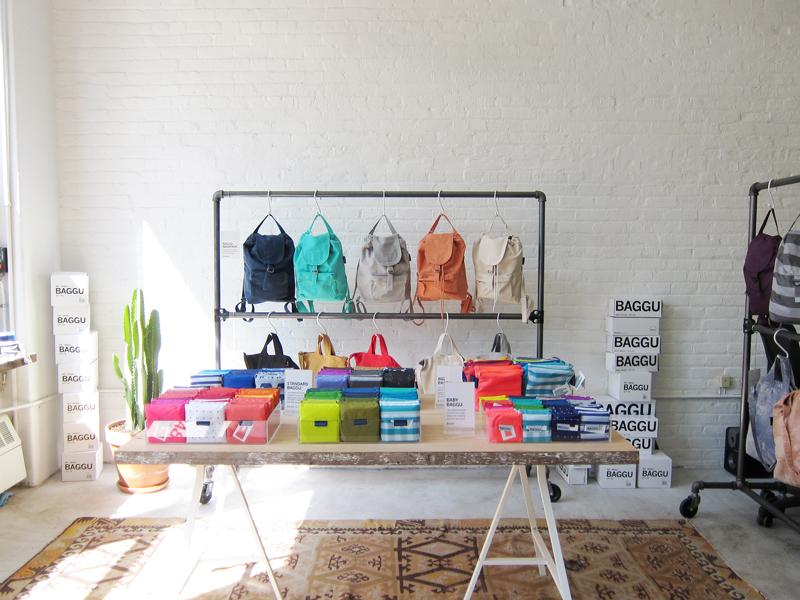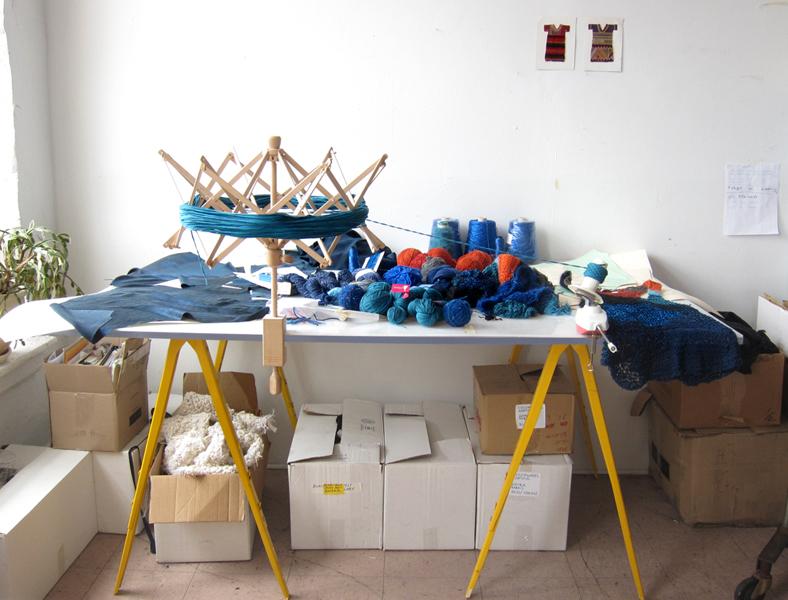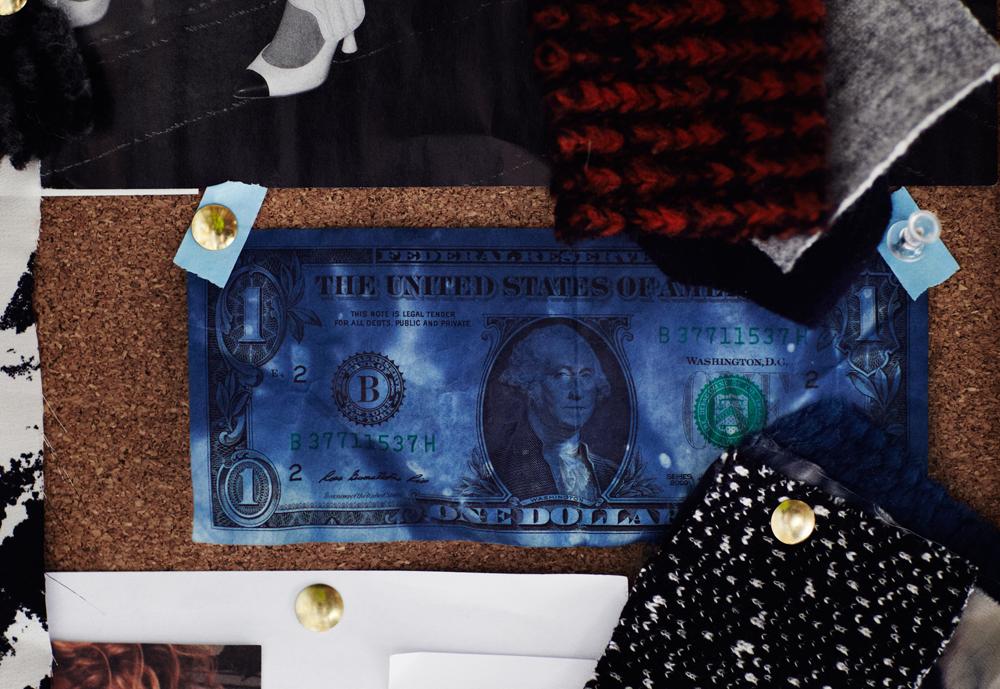
05.07.14
Studio Visit
Upstate, Fashion Designers
PHOTOS BY PIPPA DRUMMOND
If there’s one thing we’ve learned here at Sight Unseen, it’s that a lack of training can sometimes go an awfully long way. Such was the case with Kalen Kaminski and Astrid Chastka of Upstate, who started their popular Brooklyn-based, shibori-inspired womenswear and accessories label back in 2010 with nary a day of fashion training between them. When they first met a few years earlier, Kaminski was an anthropology major turned prop stylist and Chastka was an architecture grad turned unhappy architect. Soon after bonding over an appreciation of handcrafted items, they found themselves trawling New York fabric stores, trying to replicate one of Kaminski’s vintage scarves. “We couldn’t find anything we liked, and we probably had no idea where to go,” Chastka told me when we visited the pair’s Greenpoint studio a few months back. “At the time, Kalen was living with an artist, and he had a shibori tapestry on his wall. We saw that, and we were like, ‘That’s perfect.’”
The two taught themselves how to dye using the ancient Japanese technique via a series of YouTube videos and “a lot of mistakes,” laughs Chastka. But it turns out that learning to embrace those miscalculations is what would make their clothes so special. “The two main dye methods we use are itajime and arashi, which are binding and folding techniques,” Chastka explains. In itajime, a wooden resist is placed inside the folded fabric to create a compression that’s responsible for the pattern; in arashi, the resist is a plastic hose. “But what we’ve figured out, and how we’ve branched off from traditional shibori into our own thing,” says Chastka, “is the sloppier the fold, the more interesting the pattern. So instead of trying to make precise folds as traditional shibori artists would, it’s a lot looser and messier. We invite wrinkles into the folds so the patterns are just a little more complex.”
The two are equally inventive in their use of dye. Traditional shibori artist use indigo, and while many of Upstate’s garments stay true to that hue, Kaminski and Chastka like to develop their own distinctive palette. “We use a lot of composite fiber-reactive dyes, which are made from mixing primary dyes together,” says Chastka. “In a traditional dye house, you would agitate the water to keep the color homogeneous. But in our set-up, we don’t agitate at all, and that allows for the colors to separate out into their components. For example, we have our Earth color — that color is actually a gray dye but becaise we don’t agitate it, it comes out purple and green with a little bit of yellow.”
Perhaps because the dye is such an unpredictable, ever-changing variable, the two try to keep their patterning and shaping quite minimal — a kimono here, a boxy shirt there. Their first garment — an edition for Of a Kind that sold out almost immediately — was, as Chastka describes it, “a piece of fabric folded over with a hole in the middle and the sides sewn up.” Their housewares, which they branched into a few years ago, also keep it simple. Ever curious, though, they’ve recently begun to explore the world beyond dyes. When we met them in their studio, they had wool swatches on hand and images of V-neck Chanel sweaters tacked onto their inspiration board. “Because we wear a lot of Upstate, winter has been hard, because the fabrics that we have the ability to dye here are not so warm,” Chastka says. “Now, instead of being limited by the dye, we’re trying to bring in what we would want to wear for those occasions and then make it something that feels harmonious with the dyed pieces.”
Recently the two have begun exploring the color world beyond dye as well, using digital prints and even spray paint to broaden their artistic process. “Because of our backgrounds, I don’t think either of us understands the parameters of what you can and can’t do,” says Kaminski. “Every season we go for it, and that’s what we’re doing by bringing in the knitwear. I think it’s a lot of learning, but we don’t really know what’s feasible and what’s not. We just have to try everything.”
